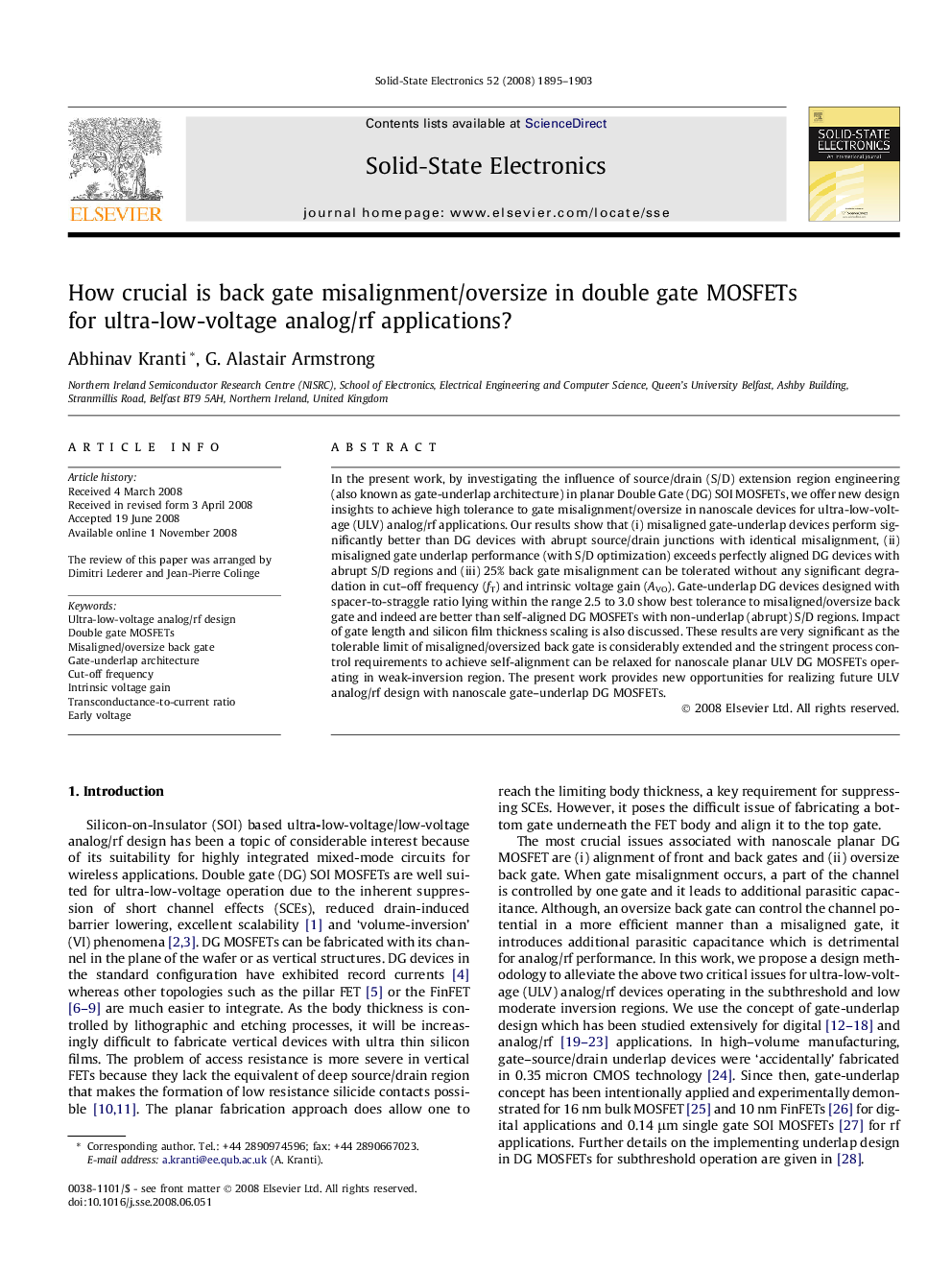| Article ID | Journal | Published Year | Pages | File Type |
|---|---|---|---|---|
| 748197 | Solid-State Electronics | 2008 | 9 Pages |
In the present work, by investigating the influence of source/drain (S/D) extension region engineering (also known as gate-underlap architecture) in planar Double Gate (DG) SOI MOSFETs, we offer new design insights to achieve high tolerance to gate misalignment/oversize in nanoscale devices for ultra-low-voltage (ULV) analog/rf applications. Our results show that (i) misaligned gate-underlap devices perform significantly better than DG devices with abrupt source/drain junctions with identical misalignment, (ii) misaligned gate underlap performance (with S/D optimization) exceeds perfectly aligned DG devices with abrupt S/D regions and (iii) 25% back gate misalignment can be tolerated without any significant degradation in cut–off frequency (fT) and intrinsic voltage gain (AVO). Gate-underlap DG devices designed with spacer-to-straggle ratio lying within the range 2.5 to 3.0 show best tolerance to misaligned/oversize back gate and indeed are better than self-aligned DG MOSFETs with non-underlap (abrupt) S/D regions. Impact of gate length and silicon film thickness scaling is also discussed. These results are very significant as the tolerable limit of misaligned/oversized back gate is considerably extended and the stringent process control requirements to achieve self-alignment can be relaxed for nanoscale planar ULV DG MOSFETs operating in weak-inversion region. The present work provides new opportunities for realizing future ULV analog/rf design with nanoscale gate–underlap DG MOSFETs.
